
Welcome to Deep Green
Deep Green is a show about how the built environment impacts climate change and equity. Buildings are some of the biggest things we make as human beings. In these bi-weekly episodes, we explore how through understanding buildings, cities, and all the things that go into them, we can do better for the environment and all life on this planet.
Season 2 | Episode 8
The Carbon Footprint of Wood Buildings

When layers of wood are put together in a specific way—usually glued together—they make for a material that has the structural strength of steel. And, surprisingly, is fire-proof. We’re not talking log cabins but a specific kind of wood material commonly known in architectural circles as mass timber.
Portland International Airport’s new main terminal is part of a race to build the biggest building out of this wonder material. But exactly how sustainable is it? Figuring out exactly where the wood comes from, how it is grown and harvested, and how the mass timber products are used and reused is vital for getting an accurate picture of a mass timber building’s carbon footprint
Jacob Dunn and Marty Brennan, both Associate principals at ZGF, are two of the designers behind that Portland Airport Building. And they have developed a tool called the UpStream Forestry Carbon & LCA Tool, in partnership with the University of Washington, to track the amount of carbon sequestered—or emitted—by mass timber.
In this episode, Metropolis digital editor Ethan Tucker speaks with Jacob Dunn and Marty Brennan to learn more about their tool and why all wood buildings are not created equal.
Season 2 | Episode 7
Affordable and Sustainable Housing

If we want to fight climate change, improving or retrofitting an existing building often makes more sense than tearing it down and building a new one. But which buildings does it make sense to retrofit?
The Tower Renewal Partnership in Toronto argues that we should spend time retrofitting the buildings that make an impact in regular people’s lives: apartment buildings with affordable rents. The kind of buildings built with regular, mundane materials, where there are very small financial incentives or margins to make big improvements. The kind, in short, that are the toughest to retrofit.
Yet, architect Graeme Stewart and his firm ERA architects, which is behind the Tower Renewal Partnership, have done just that with the Ken Soble Tower in Hamilton, a Toronto Suburb. The 8-story high rise was built in 1967, and today it’s the largest Passive House–certified residential retrofit project in the world—and it offers affordable housing for senior citizens. In this episode, Metropolis Digital Editor Ethan Tucker speaks with Stewart to find out how the firm managed to make an affordable building sustainable.
Season 2 | Episode 6
Future 100: The Next Generation of Sustainability
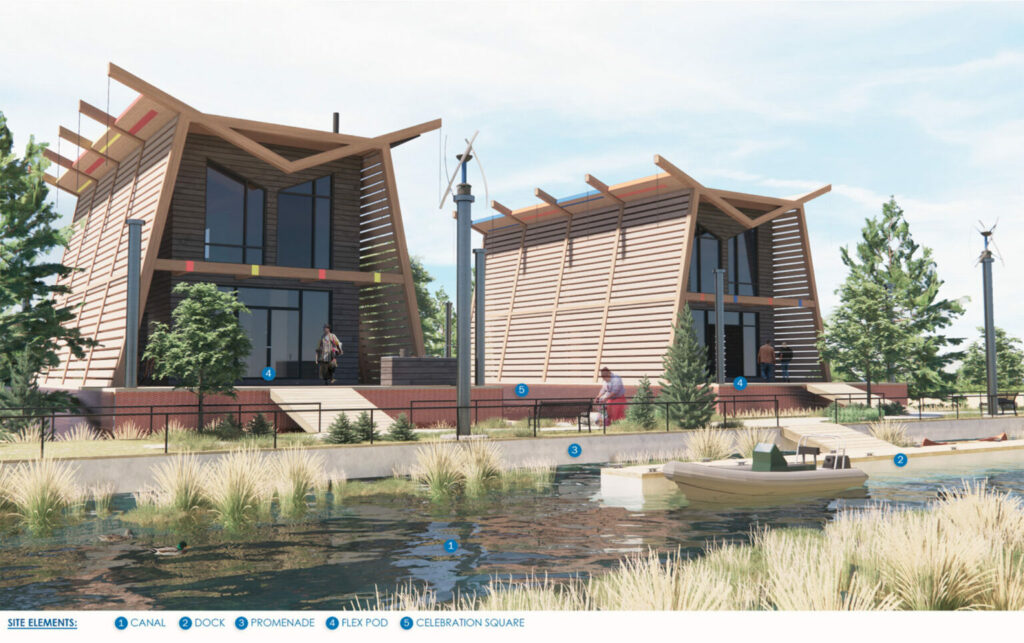
Should one of the United States’s most iconic bridges, the San Francisco-Oakland Bay Bridge, be turned into a cicada farm to raise insects for food? Yes, if you ask David Rico Gomez, who is graduating this year with a degree in architecture from the California College of the Arts.
David is one of the Metropolis Future100, the 100 students we selected as the top architecture and design students graduating in North America this year. And he has something in common with a lot of his peers: a commitment to sustainable architecture and a willingness to search for extraordinary solutions.
In this episode, Metropolis editor Ethan Tucker speaks with David and four of his contemporaries from the Future100 list. Some of their ideas: building floating homes for extreme weather events; advancing rammed earth for interior uses; and creating hyper-flexible housing for traveling nurses to avoid carbon emissions associated with renovation or demolition.
Season 2 | Episode 5
Water as a Battery
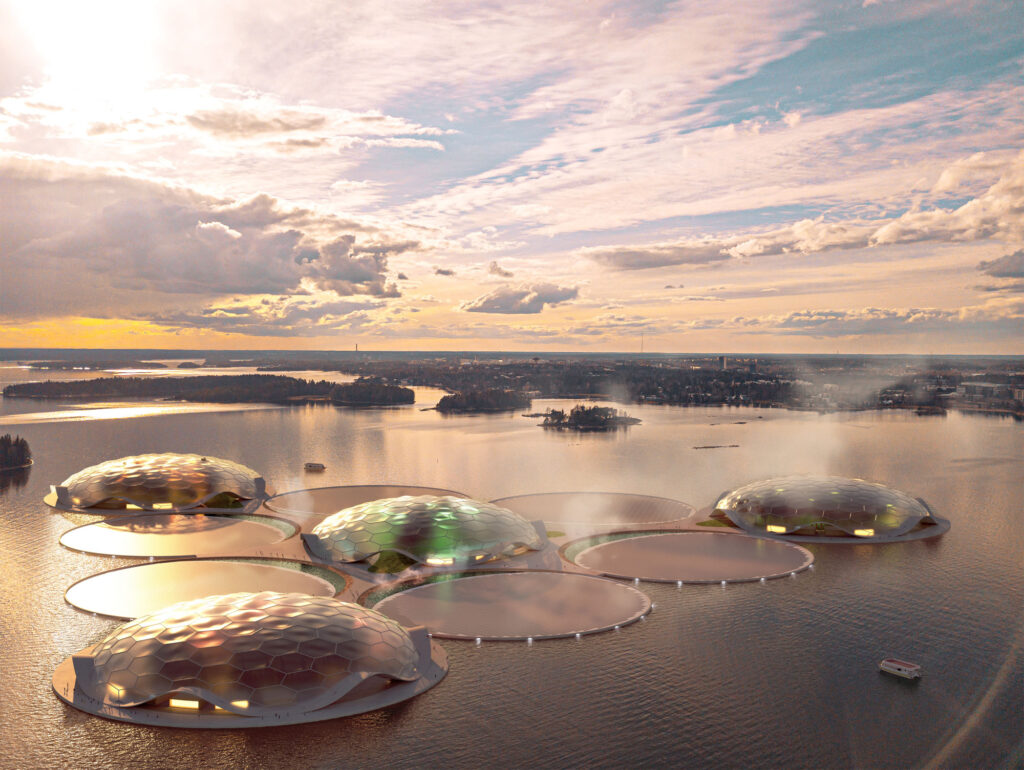
In 2020, a FIFTH of all the energy generated in the United States came from renewable sources. That means wind, hydroelectric, solar, biomass, and geothermal energy are slowly but surely winning. Combined, they surpassed nuclear and coal-based energy for the first time in history. As we move toward cleaner sources, we have to get even more efficient in how we handle and use energy. And that means: batteries.
The eternal problem in electricity generation is when you generate too much energy, how do you store it so you can use it when your capacity to generate energy dips? Architects and engineers today have hit on a novel solution for storing energy—water.
While the idea of using water to store electricity is almost a century old, the two projects in today’s episode use water as a battery—but for heat. First, Metropolis executive editor Sam Lubell speaks to the visionary architect Carlo Ratti, who along with his architecture firm won a Metropolis Responsible Disruptors Award for Hot Heart, a proposal to heat the city of Helsinki using a set of floating basins in the Gulf of Finland.
Then, in part two, senior editor Kelly Beamon talks to Don Posson, a director of engineering at SmithGroup, who designed the very first sewage waste energy exchange system in a commercial building in the U.S. Brilliant stuff.
Season 2 | Episode 4
Regenerative Interior Design
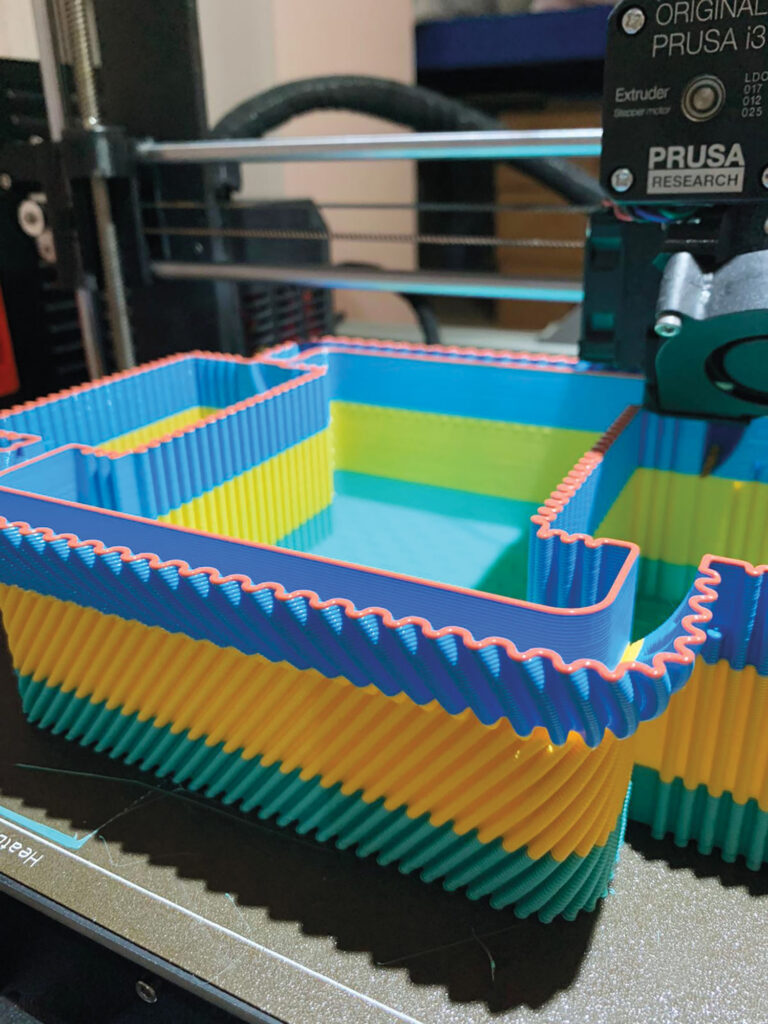
Interior designer Laurence Carr is a trailblazer and an advocate in this area. Carr believes in design that is restorative and regenerative. Which means she doesn’t want to just stop at doing less harm to the environment, she believes that design can actually help restore balance between humans and their ecology, and can allow natural systems to regenerate.
In this episode, Metropolis’s senior editor Kelly Beamon sits down with Carr to discuss the myriad alternatives available to interior designers today, what challenges persist, and how we can all be a bit more responsible with the stuff in homes, offices, hotels, and other spaces.
Season 2 | Episode 3
Making Offices Carbon Neutral
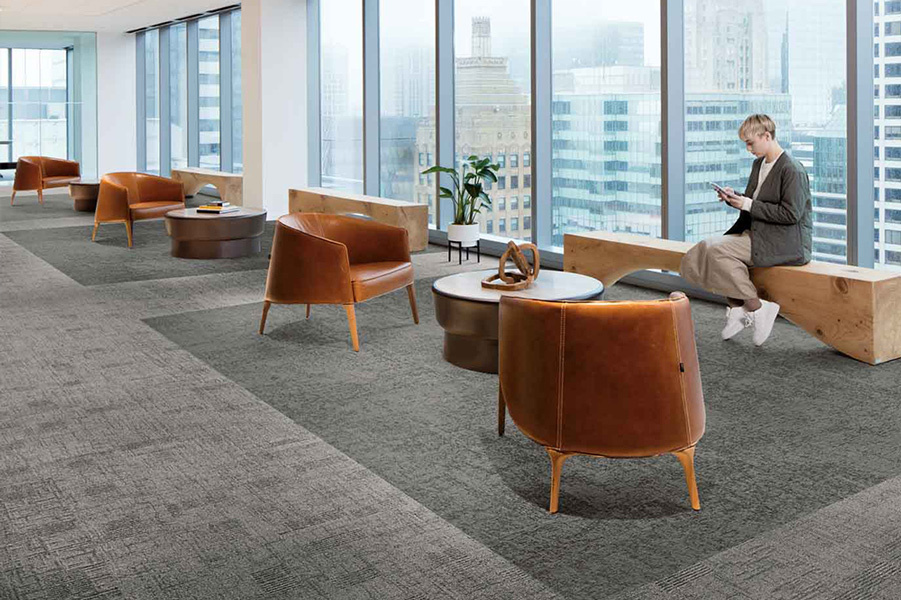
When we think about the carbon emissions of buildings so far we’ve focused largely on two things: the emissions involved in operating the buildings and those involved in the building materials and construction. But there’s a third piece that we’ve largely overlooked, which is all the stuff inside the buildings: furniture, carpet, the lights, the seats. All that stuff puts greenhouse gases in the air when it’s made, when it’s transported, installed, and eventually discarded.
Now consider a company like Salesforce, which designs and develops enterprise software and operates 59 offices around the world. Every time one of those offices is renovated, it means carbon emissions, which is a problem for a company that’s committed to sustainable practices. But through some consistent efforts, Salesforce has been chipping away at the carbon emissions of its workplaces.
In this episode, brought to you in partnership with Interface, we discuss those efforts with Amanda von Almen, senior manager of sustainability and head of sustainable business environments at Salesforce, and Lisa Conway, vice president of sustainability, Americas, at Interface, who supplies all of the flooring solutions at Salesforce—and explore why workplaces are really an important factor in the fight against climate change.
Season 2 | Episode 2
Can Buildings Be Like Trees?

In 2002, the architect William McDonough and the chemist Michael Braungart came up with a rather revolutionary idea. The duo had recently published their groundbreaking book, “Cradle to Cradle: Remaking the Way We Make Things,” and would go on to become leaders in the sustainability movement, In fact, they anticipated many aspects of what we today call the circular economy. But back in 2002, the architect and the chemist wrote an essay titled Buildings Like Trees, Cities Like Forests for a book called “The Catalog of the Future.”
Today, 20 years later, we return to that idea: Can buildings be like trees? This episode includes two segments. First, Metropolis editor in chief Avinash Rajagopal reads the introduction to Braungart and McDonough’s essay. Then, we dive into Urban Sequoia, a proposal by the architecture firm SOM that takes giant redwood trees as the inspiration for carbon-capturing skyscrapers and cities.
Season 2 | Episode 1
The Carbon Footprint of the Metaverse
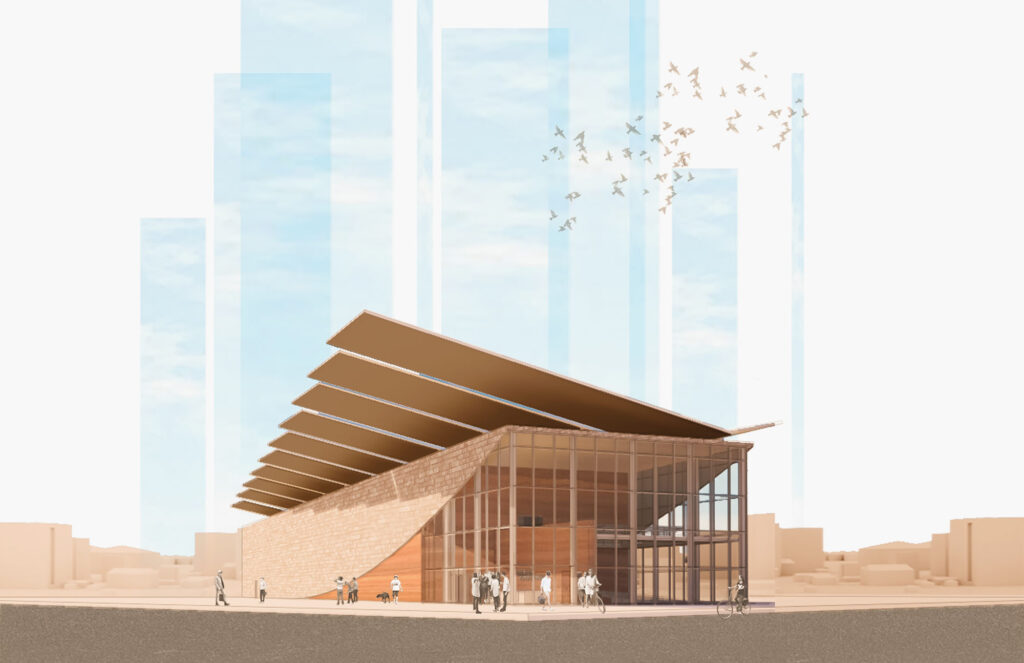
Even if you don’t care about technology, it’s likely you’ve heard something about the metaverse. It’s a sort of 3-dimensional, immersive internet that would take lots of technologies that exist already today, like video games, VR, and NFTs, and find a way to connect all of them.
While our team was reporting on this new phenomenon for our January/February 2022 issue, we began to wonder about the carbon footprint of the metaverse. There is no metaverse without the cloud, which actually lives in buildings—steel and concrete buildings called data centers. If more people get in the metaverse, more stuff gets on the cloud, more data centers—you get the picture. There’s got to be a way to start addressing this before the problem gets out of hand.
Can we build an online world that doesn’t destroy the real one? In this episode, reporter Audrey Grey speaks to Drs. Julie Kriegh and Dr. Hyun Woo “Chris” Lee, UW College of Built Environments colleagues, who were part of a team imagining a completely different future for data centers.



